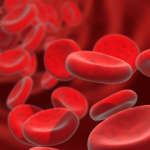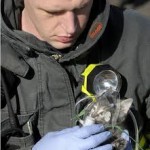CPR and AED training are two different steps in the process of saving the life of someone suffering from cardiac arrest. The acronym “CPR” stands for cardiopulmonary resuscitation, which is the act of repeatedly compressing a person’s chest in order to keep their blood pumping throughout their body. CPR acts like a manual heartbeat, keeping vital organs alive even after the heart has stopped beating. While many people are already familiar with CPR, its counterpart often goes unnoticed. Most classes are actually offered as CPR AED training, or at least explain the use of the AED in the course of their instruction. “AED” stands for automated external defibrillator and there is a big difference between CPR and AED training even though both are usually covered in the same class.
Unlike CPR which only pumps blood to vital organs, the AED is the machine that can restart the heart. In this respect, you could say that these classes should be termed “AED CPR training” since the AED is a much more important factor to a cardiac arrest victim’s survival. When a person goes into cardiac arrest, their heart has stopped beating. This means that vital organs, such as the brain, will begin to die within minutes if they do not continue to receive blood and oxygen. This is why anyone who is able to provide assistance should step in quickly to administer CPR.
The process for helping a victim of cardiac arrest using CPR and AED is explained below. These steps are always covered in detail no matter what CPR AED training you attend.
First call 9-1-1 to alert medical responders that there is an emergency. As soon as the 9-1-1 call has been placed, CPR compressions should begin immediately. If you are the only one available to assist the victim, do not stop compressions until emergency medical personnel arrive. In the best scenario, there will be several people nearby who can assist you in helping the victim. If this is the case be sure to enlist a few others to help with some tasks such as staying on the phone with the emergency operator, taking turns administering CPR compressions, and finding out if there is an AED nearby.
Most public places will have an available AED, which should then be immediately used on the victim. The AED is entirely automated; it will verbally walk you through preparing the victim and the pad placement, it will assess the victim’s heart rate, and it will determine if the victim requires a shock to reestablish a heartbeat. However if there is no available AED close by, continue administering CPR until medical professionals arrive with one.
If you would like to learn more about CPR and AED training, visit SimpleCPR to view a list of available classes. You can learn how to save a life by taking an online CPR AED training class today!




